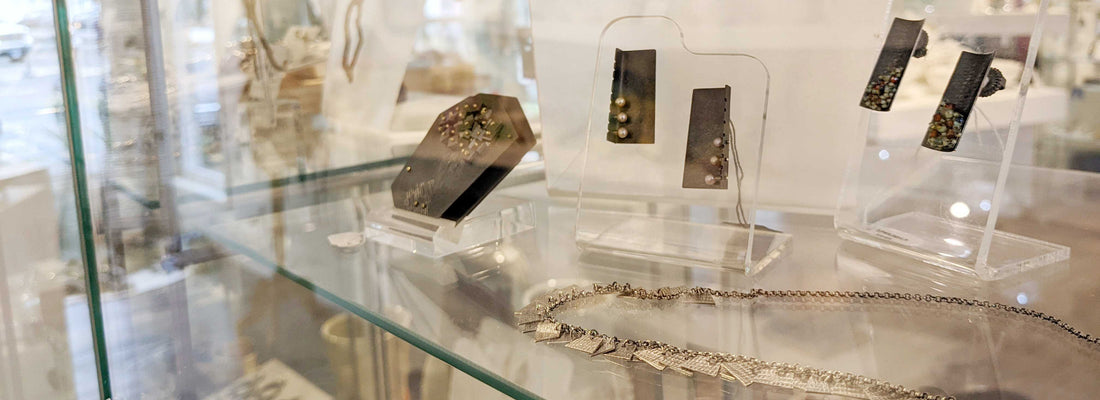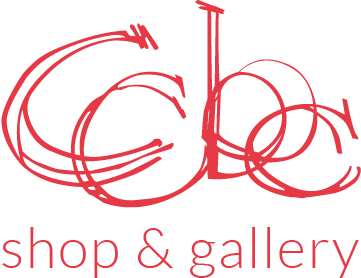
jewellery techniques
Share
As you browse through the varied jewellery in our shop, you may be wondering— how are these pieces made? Read on to learn about jewellery techniques behind the wonderful work of CCBC craftspeople.
This post is an excerpt from pondercraft.ca, CCBC's educational website.
Etching
The process of using an acid to cut into the metal and create a permanent design.
Fold Forming

Fivefold Earrings 1 - Fia Cooper
A way of forming sheet metal by folding, working the metal and then unfolding. This allows the artist to create new shapes and textures without soldering.
Forging and Hammering
Process of shaping metal using a tool (usually a hammer), often the piece is heated up in what is called a forge before the hammering begins.
Hand Engraving
The design is first hand sketched onto the metal surface. Next, using an etching tool, the thick lines are carved out using multiple shorter strokes, while thinner lines are achieved by connecting single strokes.
Riveting

Riveted Trapezoid Necklace - Sherri Pelican
Riveting, also known as cold connection, is an ideal solution for fasting, connecting, and stacking layers of jewellery parts without soldering. In addition to metal, rivets can be used with leather, plastic, and more to create unique multi-dimensional components.
Soldering
The process of using solder to create a bond between two pieces of metal. This is a low melting point metal that is heated between the joint of the two metal pieces, acting as an adhesive.
Wax Casting

The process of pouring metal into a wax-cast to create the desired design. Once the metal has set it is melted away leaving the new metal piece behind.
Learn more about clay and other craft mediums at ponder craft and design, CCBC's educational website.
cover image: Sherri Pelican display at the CCBC Gallery + Shop
